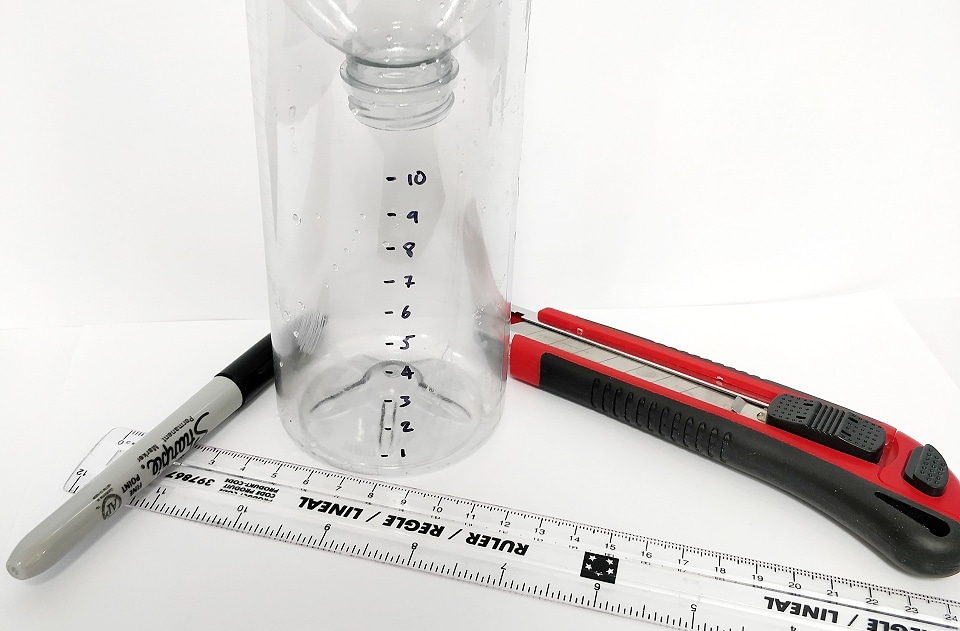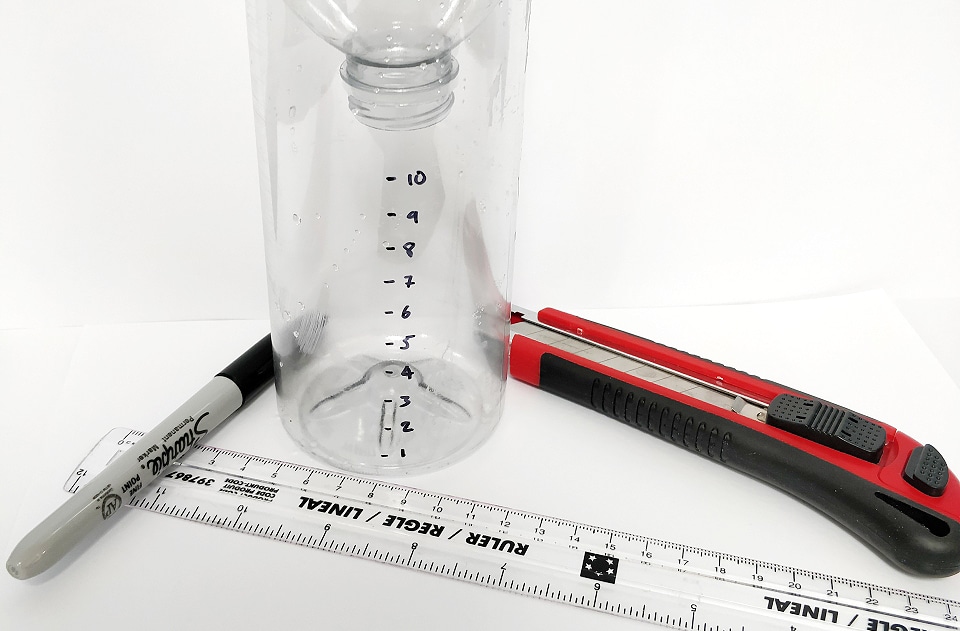

Measuring the local weather is pretty important, not just for planning whether you need a coat or sunglasses, but because collecting information about the weather can help us see how local weather patterns may change over time.
– Old drinks bottle, clean and dry
– A stanley knife or sharp pair of scissors (ask an adult to help)
– Sticky tape
– A ruler
– A marker pen
– A strip of masking tape/white insulating tape (optional)
Ask an adult to help you with making your rain gauge.
To make your rain gauge:
1. Cut the top of the bottle off, very carefully, around 10 cm down from the bottle cap.
2. Be very careful, as the cut plastic will be sharp. Turn the top part you’ve just cut off upside down, and place it inside the main part of the bottle.
3. This will act as the funnel, collecting rain in the main part of the bottle
4. Use the ruler to mark a scale, in centimetres on the side of the bottle using the marker pen. You can also mark a strip of white/masking tape, and then stick this to the bottle if easier.
To use your rain gauge:
1. In your garden, or outside space near where you live, choose a safe place to install your rain gauge, out in the open and away from overhanging trees or buildings.
2. Dig a small hole for your gauge to sit in, or use something heavy to prop it up, so it won’t be blown over by the wind.
3. Check your rain gauge at the same time every day, and record it in a weather diary, or observation sheet
4. Empty the rain collected so that the next day will be measuring only the rain that’s fallen in the last 24 hours.
This simple homemade device measures the rainfall at a particular location, and is an interesting way to see what the weather local to you is doing. In fact, all weather is local, and the way that rainfall patterns are collected (and therefore predicted) is based on using slightly more sophisticated versions of these homemade rain gauges. Knowing what the weather has done at a particular time of year also helps when forecasting what the weather might do at the same time the following year.
Having an accurate idea of your local weather can help in planning your own activities, and is also a good way of comparing the weather forecast and rainfall statistics with what’s actually happening with the rain!